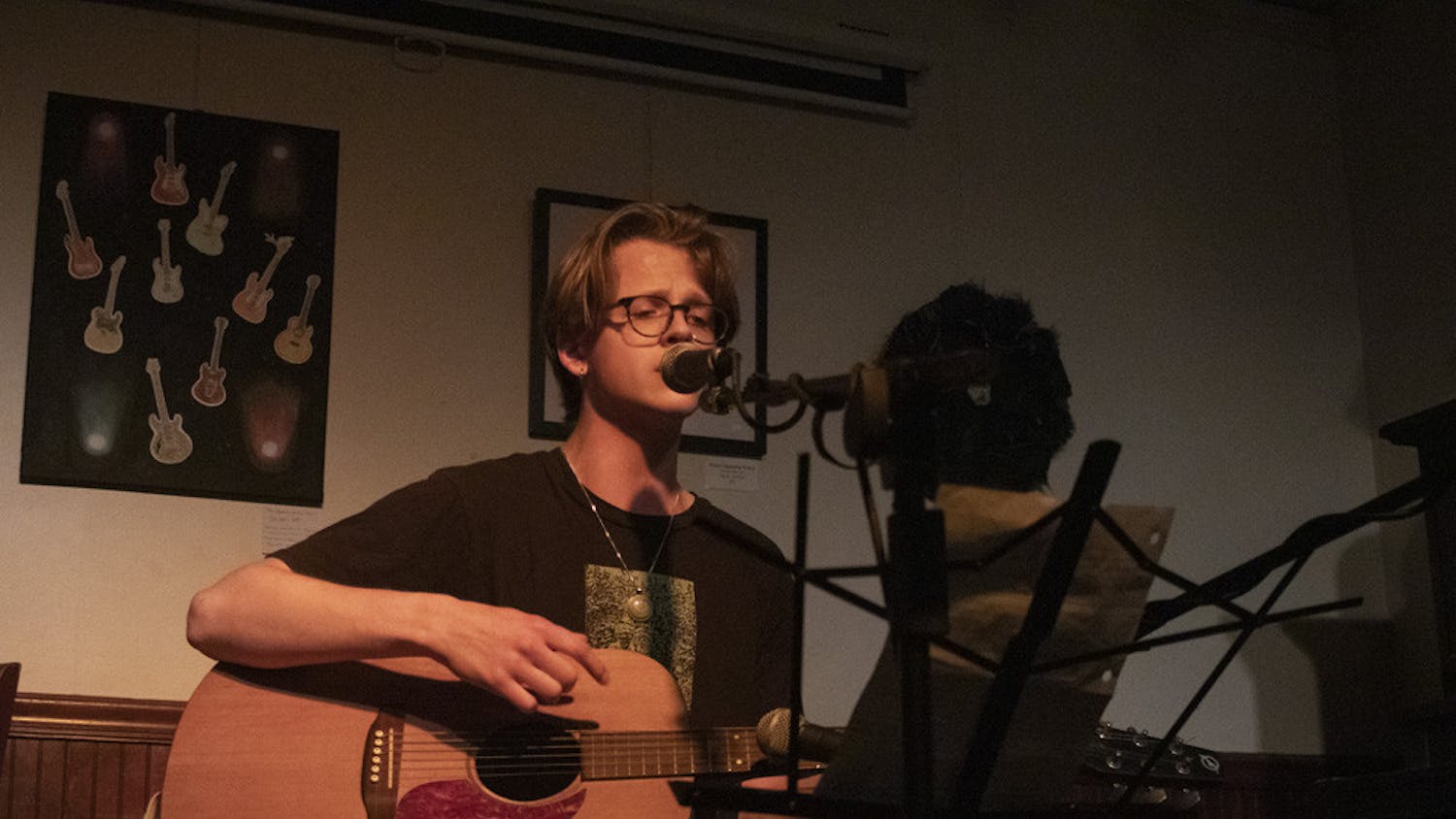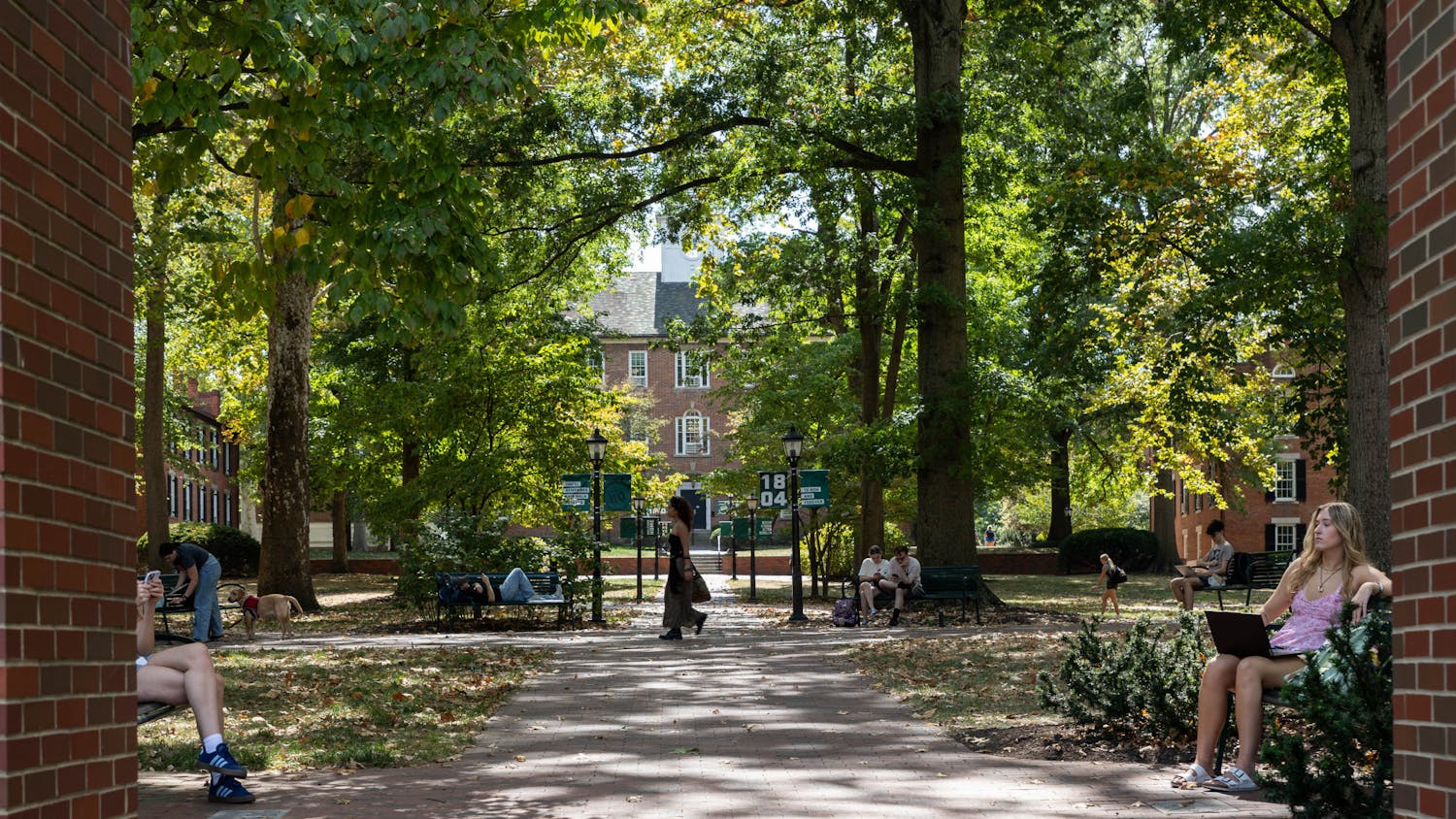OU is working on creating a community for emancipated foster care youth.
It took about nine months for the state to label Mark Chaney a “failure to thrive.”
He was born prematurely with cerebral palsy to a teenage mother who already had four children. He was not gaining weight, so the state was worried his mother wasn’t feeding him.
That began his time spent in and out of the Franklin County foster care system, a cycle that continued until he graduated high school.
Chaney is a senior studying social work at Ohio University. Though he might have been slow to “thrive” by state standards, when he graduates college in May, he will join a small percentage of emancipated foster care youth who earn a college degree — a group OU is now trying to more actively identify.
For the first time, OU offered next year’s freshmen applicants the opportunity to request materials on resources available to foster youth. About 280 applicants wanted more information, said Katie Quaranta, an OU spokeswoman.
Stumbling upon foster youth
About 2 to 9 percent of foster youth who graduate high school obtain bachelor’s degrees,according to the National Factsheet on the Educational Outcomes of Children in Foster Care.
Jacob Okumu, coordinator for student outreach and developmental services in the Office of Multicultural Student Access and Retention, is trying to change that — at least at OU.
Okumu first realized emancipated foster youth were among an underserved population at OU when he was working with first-generation college students in the College Adjustment Program.
Foster youth typically attend multiple high schools, which leads to a lack of academic preparedness if they get to college, Okumu said.
About 400 OU applicants in 2010 self-identified as having been homeless, a ward of the state, in foster care or financially independent at some point in their lives, according to FAFSA information analyzed by OU officials.
Before the university asked applicants if they wanted more information on foster youth resources, the only way to identify foster youth studying at OU was to sift through FASFA information.
The university found Chaney by sorting through those financial documents, and Okumu gave him a call. Now, the Multicultural Office is creating a support system for foster youth by working with Chaney and others who have aged out of the system to see what resources could best help those students in college.
OU’s programming will help foster youth identify financial resources and “put an advocate in (their) corner,” Chaney said.
“In college, I didn’t really consider myself a former foster kid, just because you’ve got all of these other identities as a person, but there were moments where you realized, you know, in terms of academics, being a foster kid could kind of single you out in a sense,” he said.
The university is working with the Ohio Reach Program, a statewide organization that focuses on advocacy, preparedness and empowerment of foster youth tackling higher education.
OU officials are among those attending Ohio Reach workshops and conferences to get more information, said William Murray IV, Ohio Reach coordinator.
“Colleges already have services there to help students who need assistance but marketing to that demographic (of foster youth) was left out,” Murray said.
Currently, Okumu and the Multicultural Office are the leading resources for emancipated foster youth at OU.
He built a rapport among students when he was a part of the College Adjustment Program, so much so that when the six-week winter break rolled around one year and some students didn’t have anywhere to go, they turned to Okumu, who was going out of town for the holiday.
“You guys, stay at my place,” Okumu said to them. “Don’t burn it down.”
The university is working to provide more to its students. First, by determining who they are.
“This is a group of students that, unfortunately, has gone unnoticed at OU,” said Cecil Walters, director of OU’s Multicultural Office.
Students who express interest in receiving more information when they apply will have their contact information shared with admissions and the Office of Multicultural Student Access and Retention so office members can forward them resources related to scholarships, health care benefits and the LINKS Program, a peer mentoring group for first-year multicultural students.
Two applicants for the incoming freshman class who requested these resources by reaching out directly to Okumu have already committed to OU, he said.
Being an emancipated foster youth at OU
Youth in foster care wanting to swim, get a haircut or have a sleepover need the state’s permission, so the liberation of college takes on a new meaning for those who’ve aged out of the system.
“A lot of these skills that we pick up from our parents as we go, a lot of foster kids don’t have, and it’s not from lack of trying from their foster parents,” he said.
Chaney’s foster parents “beat it” into him that he was going to college.
His lifelong case manager, Kelly Stromer, provided resources to help him pay for school.
But he wasn’t part of the norm.
“It’s the stereotype and what’s told to you all the time: foster kids don’t go to college,” Chaney said. “I didn’t know any foster kid that had went to college, let alone university.”
Thanks to scholarships targeted to foster youth and merit-based awards, all of Chaney’s in-state tuition is paid for, as well as other expenses, including housing.
“(Emancipated foster youth) have no legal guardian after they age out; they are financially on their own,” Okumu said. “They are dependent on the state.”
The age in which foster youth “age out” of the system varies depending on the state, county and case. For some, that means being emancipated after high school graduation; for others, it occurs when he or she turns 18.
Chaney’s foster parents, whom he lived with for seven years, dropped him off on South Green his freshman year, leaving him, for the first time, to be on his own.
“I called them about an hour later and I was like ‘Am I allowed to go out to eat, go get some food?’ and they were like ‘You’re not in foster care anymore; you can go and do that. … You have to go make your dinner,’” he said. “It’s funny, but it’s also kind of eye opening, I wasn't really prepared for that. … I had to ask to go out into the world.”
Okumu, Chaney and several other emancipated youth sometimes gather for movie nights and meals during family weekends and holidays.
“What happens during Dad’s Weekend for the ones whose backgrounds have serious problems?” Okumu said. “How are they psychologically at that time when the whole campus is invaded with family-themed programming?”
Chaney has suggested courses on budgeting, cooking and basic social skill training, such as “learning to interact, learning to just be social and open up and have a safe place to just, you know, take things a little slower than you might usually.
“We have communities for the LGBT community. We have communities for academics … but you don’t have a community if you are a foster kid,” Chaney said. “That label doesn’t fall away, whether you like to think it does or not, when you are emancipated.”
Chaney was accepted into University of Southern California’s social work Master’s program, one of a few programs he has applied to. He said no matter at what school he ends up attending, he’d like to be involved with bettering college accessibility for foster youth there.
@ohitchcock






